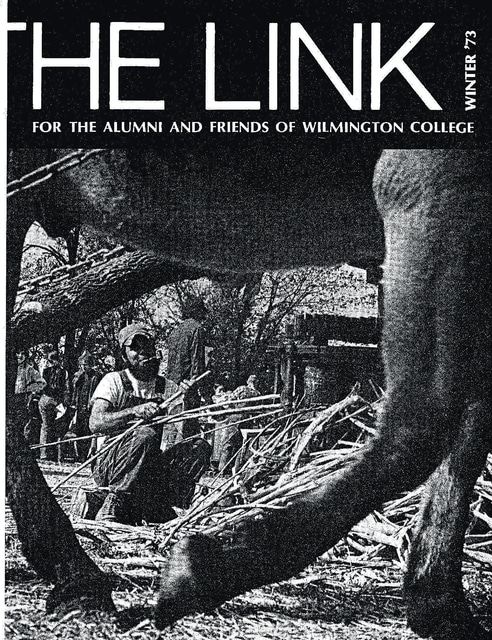
In the summer of 1973 a Wilmington College student, Lynn Miller, planned a Sorghum and Craft Festival on the college campus.
The source of the sugar cane and the mill they used to process the sorghum came via the Banks family that lived on Beechgrove Road, a few miles outside of Wilmington. Miller has since passed away and the location of the sorghum mill, supposedly given to Wilmington College, is a mystery.
But there is a mill painted red in the front yard of Forest (Sonny) Goings who still lives on Beechgrove Road where his family grew the sugar cane.
Sonny’s grandfather, Taylor Banks, when he was interviewed in 1973 by the News Journal at age 87, said he remembered at age five or six “sittin at the old cane mill at dawn, watchin the old mule go round … freezing in the morning.”
Taylor’s father was a slave and the Banks family moved to Clinton County in 1902. The land on which they settled was only a few miles from the house of the Underground Railroad that assisted an uncle years earlier, when he was a runaway slave.
Back when Taylor was a young man, he recalls going with his father and the mill, which was mounted on two big wheels, for miles throughout the county to mill sorghum.
No one I talked to could tell me where sugar cane is currently grown in the county, but there is apparently still a sorghum festival of some sort in northern Kentucky. Mary Ellen Krisher (Hadley) can recall as a child going with her father to purchase sorghum at the Beechgrove Road location, she especially remembers the long steep hill one had to descend to visit the site.
The photo, taken under the belly of a mule by the name of Jim, depicts part of the estimated 800-pound mill around which the mule endlessly trudged to squeeze the liquid from the cane stalks. Much like the process of producing maple syrup, the liquid would be boiled for about six hours until it was transformed into a rich molasses syrup.
Sonny once visited a sorghum festival in Kentucky where he purchased some sorghum which was purported to be like that his grandfather produced – his conclusion was unequivocal, “nothing like grandpa’s!”
The sorghum production was not just a means of making some money, it was a service to the community.
Another Banks relative I ran into some time ago was Floyd Banks. By chance I recently ran across a letter to the editor from Floyd written back in 1959, when he was stationed in Korea with the Army.
He writes, full of compassion: “I’m writing this letter in behalf of the needy children here in Korea. The children that many American service men died for here in Korea. I’m writing to ask you to publish this in the News Journal so that all of the people in Wilmington and the area around Wilmington will know the need for food and clothing for this orphanage that this Battalion is trying to support, but we can’t nearly contribute enough for their need.”
He then gives the battalion address, his name and the name of the chaplain.
Compassion comes in many ways and from many sources!



